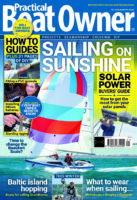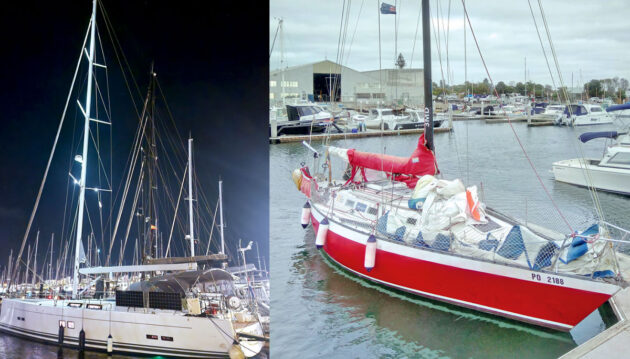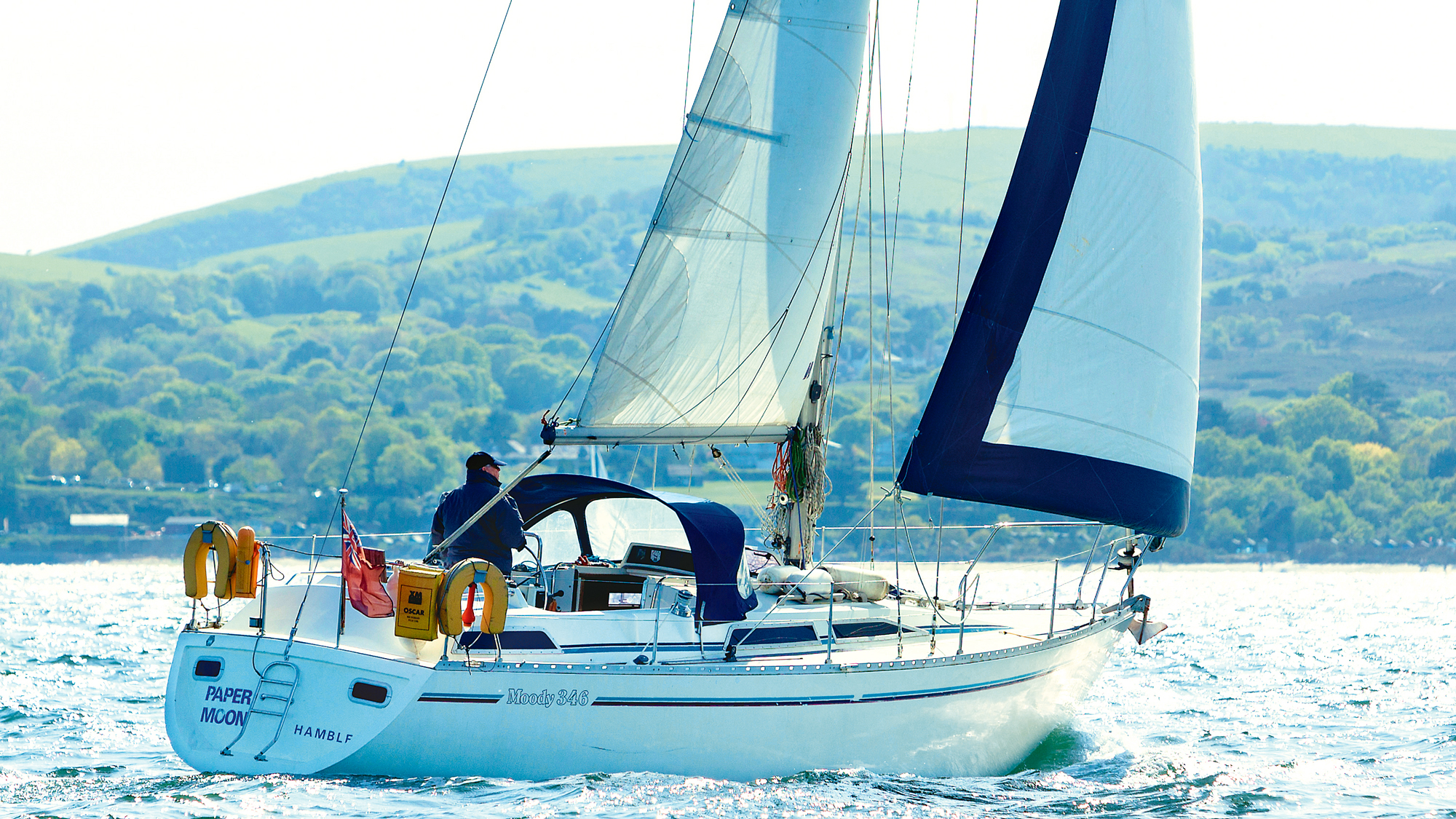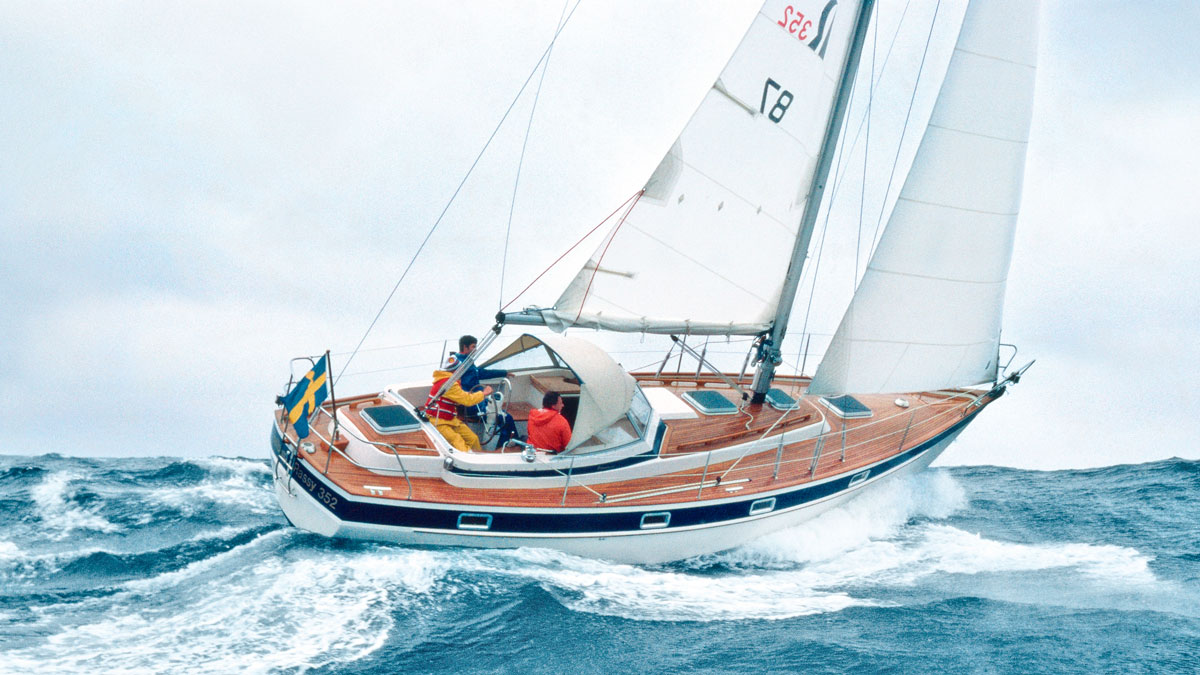Based on his experience, Saša Fegić examines whether new, larger yachts are better than older, smaller models
Just a few decades ago, a 40ft yacht was considered big and luxurious, writes Saša Fegić. These days, when you enter a Mediterranean marina, anything less than 50ft is seen as a small boat.
Yachts have grown not just in size; every new generation has more equipment, electrics, electronics and gadgets installed.
Back in the day, a refrigerator and an electric windlass were considered luxurious optional extras.
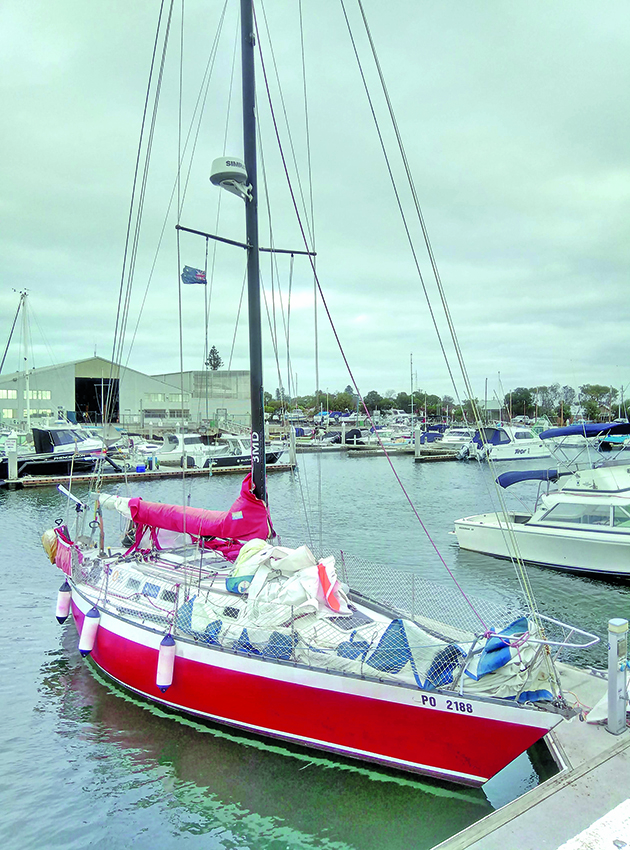
Saša Fegić’s sloop HIR 3. Credit: Saša Fegić
Now, some sailors find it unimaginable to sail without these, along with many other things like air conditioning or a watermaker.
Previously, I have sailed around the world via the three Great Capes aboard the 40-year-old 34ft home-built sloop, HIR 3.
I have also worked as a delivery skipper, recently sailing an almost new 55ft Hanse 588 from the Canaries to Croatia and, during the trip, I began to ponder.
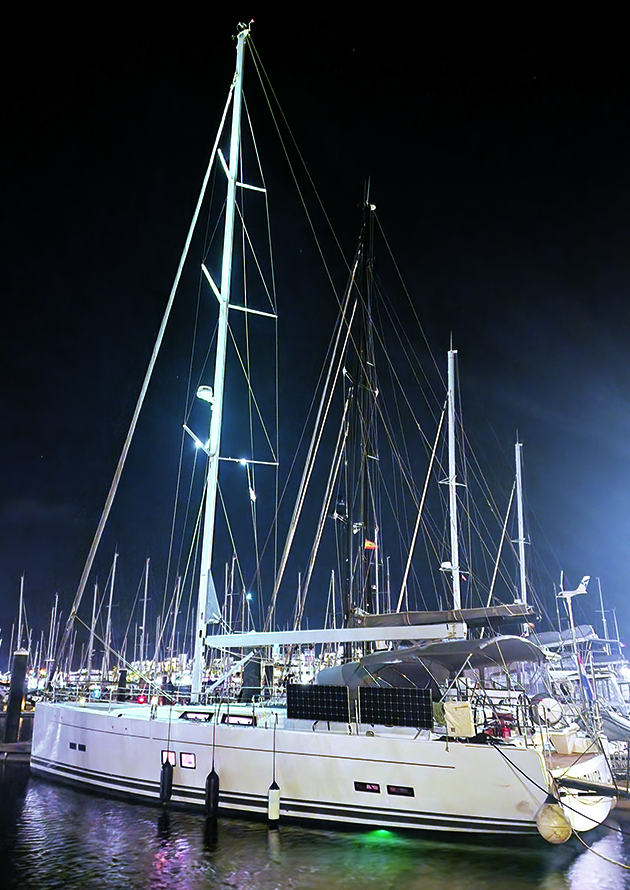
The almost new 55ft Hanse 588. Credit: Saša Fegić
I noticed that while there were stark differences between the two boats, other things remained the same.
The differences between a large new boat and a small old boat
Comfort
The first obvious difference is the accommodation comfort on board.
On HIR 3, I had just living quarters with limited storage and a small galley equipped with a fridge that was only able to cool a few beers while the engine was running every few days.
On the Hanse 588, we had two refrigerators, a freezer, a wine cooler, a bread maker, a washing machine, a dishwasher, a generator, air conditioning, a watermaker, electric toilets, separate showers and queen-size beds.
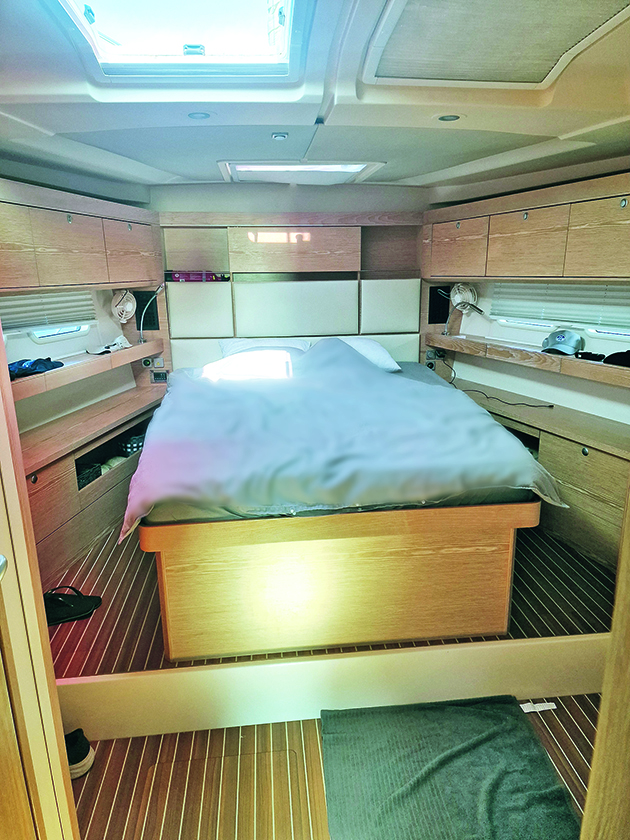
Queen-sized bed on the Hanse 588 was comfortable at anchor, but Saša found it impractical in heavy weather. Credit: Saša Fegić
These were great features when we were moored or at anchor.
But, all of this made very little difference in 35+ knots of wind when we weren’t able to enjoy any of these conveniences.
In these conditions, we’d have been better off in a small bunk bed where waves couldn’t throw us around, or with a tiny galley where you can always grab on to something while preparing a meal.
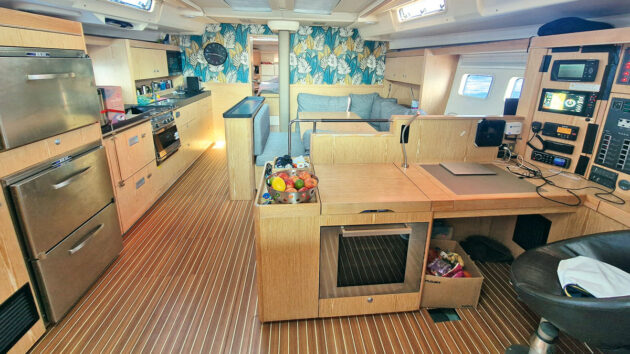
Saša would have liked more handholds on the Hanse 588. Credit: Saša Fegić
Even just moving around on a big, modern yacht in a gale is a challenge.
Big open spaces that look great while walking around a boat at a show are a hazard in any kind of gale or heavy weather; few grab rails or foot braces mean that you get thrown around and risk an injury.
Budget
I wasn’t sailing around the world on a small budget, but on no budget.
Cruising on a big new yacht means you should have an almost unlimited budget to keep it running.
It’s not just the value of the boat; the biggest difference is the cost of maintenance.
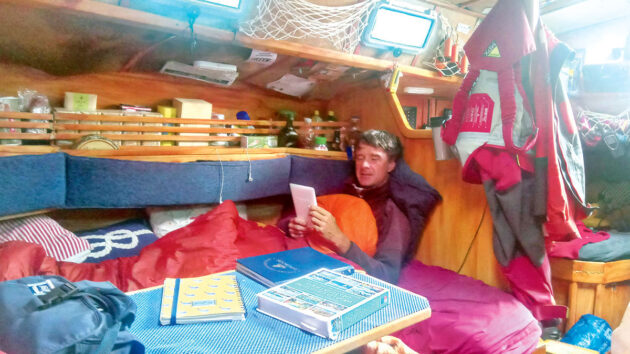
Space was at a premium aboard HIR 3. Credit: Saša Fegić
Marina fees, insurance and the increased reliance on electrics and electronics can mean it is more expensive to maintain a newer, bigger boat.
During our Hanse 588 delivery trip, the Electronic Vessel Control (EVC) on the Volvo Penta D4-150 engine malfunctioned after a wave broke over the cockpit.
When we arrived at the marina Aguadulce near Almeria, we had to be towed in as we couldn’t start the engine. We then waited two weeks for an authorised Volvo service engineer to identify and fix the problem.
The cost of towing, repair and marina fees came to over €6,000.
New engines that are controlled by computers mean that cheap and easy/improvised repairs are almost impossible.
My 34ft sloop was worth less than the watermaker on the Hanse 588, but still, I was able to circumnavigate the globe aboard HIR 3.
Often, when other crews saw us they were sympathetic, giving us spare parts, helping with repairs or buying us drinks in exchange for our sea stories.
On the other hand, when a mechanic comes to fix something on a big yacht, you can expect a shocking invoice.
Handling
A small boat is usually easy to handle, even when sailing solo.
Electric winches, bow-thrusters, and stern-thrusters typically found on larger, newer yachts also make handling easier, especially manoeuvring in tight spaces, ensuring an ease of handling regardless of the yacht’s size.
But when something breaks, the big yacht’s size and the forces it creates make handling it on your own difficult.
Repairs
We have to embrace the fact that breakages are a part of ocean sailing.
It’s easy to get accustomed to all the luxuries a big yacht has to offer, but when electronics and hydraulics break at sea it can cause real problems.
For example, an enormous sail can become unmanageable without electric-powered winches.
Improvisations are difficult and often impossible, while getting the spare parts in remote places is time-consuming and extremely expensive.
On the other hand, on a small, old boat, when you are used to doing everything manually, not a lot can go wrong.
And if it does, it’s usually an easy fix.
You have to be careful when deciding on when to reef and how hard a big yacht can be pushed. Mistakes are costly.
Just one broken shackle can lead to disaster.
Forces while sailing on big yachts are enormous, and if anything goes wrong, it’s difficult to repair underway.
Speed
Sailing on board a small, old sailboat can be painfully slow. HIR 3’s small displacement hull meant I couldn’t be fast.
The Hanse 588 was equipped with a tall mast, large sails and a powerful 150hp engine so, in theory, 200+ miles a day while sailing in the trade winds was possible.
In practice, the boat was not much faster than I was on HIR 3 due to the variable winds we encountered; with a furling mainsail and self-tacking jib, you really need a Code 0 or gennaker for speed.
Under engine, cruising speed on the Hanse 588 was just over 6 knots; 10 knots was easily achieved, but this resulted in increased fuel consumption.
I concluded that the main difference between HIR 3 and the Hanse 588 was that, if necessary, you can quickly arrive at a safe refuge in a larger, newer yacht.
Perception
Even though you are sailing across the same oceans, the way other people see you is completely different.
When people saw us moor the Hanse 588 at a marina, their emotions varied from envy to jealousy.
It seemed they were friendly just because they wanted to see their dream yacht up close.
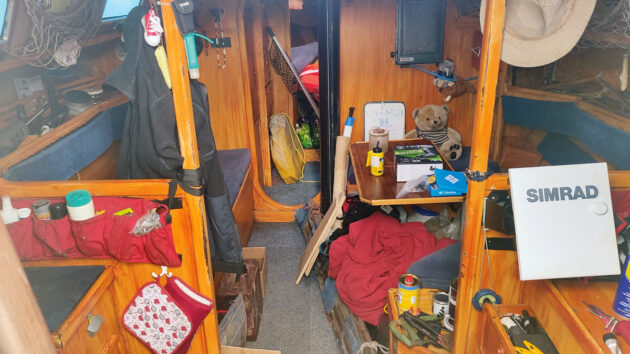
Storing spares and supplies neatly can be a premium on smaller boats. Credit: Saša Fegić
While sailing HIR 3, most people tended to feel almost sorry for us in my small boat, while others thought we were just plain crazy.
Either way, we got their sympathy.
We received a warm welcome wherever we went, and sometimes other crews even admired our bravery. We were offered help when we needed it most, we were given spare parts and even old sails from fellow cruisers.
Free drinks in exchange for hearing about our sailing experiences were also a bonus.
The similarities between a large, new boat and an small, old boat
Preparation
It doesn’t matter what kind of boat you plan to sail, the preparation will always be the same. We all have to eat, drink and be able to maintain our floating homes.
Planning the route, buying provisions, sourcing tools and spare parts will always be an integral part of cruising, no matter what kind of vessel you sail.
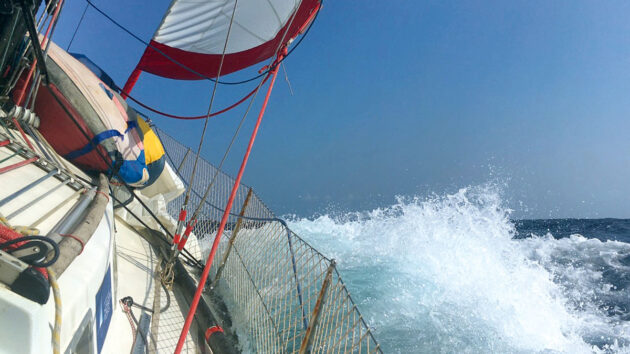
Seaworthiness is a vital ingredient for any boat venturing offshore. Credit: Saša Fegić
It always amazes me how much stuff you can fit inside a small boat. The only difference is that on a big yacht, you can organise the storage nicely.
On the downside, of course, the more fancy equipment you carry, the more spare parts you will need.
Safety
Size can give you a feeling of safety and, to an untrained eye, sailing across oceans in small boats seems extremely dangerous.
Having experienced ocean sailing on a 34ft boat and a 58ft yacht, I personally felt safer on a small, older boat as I liked the fact that I was never far from a handhold, I could brace, and a bunk and a lee cloth kept me secure when the weather turned.
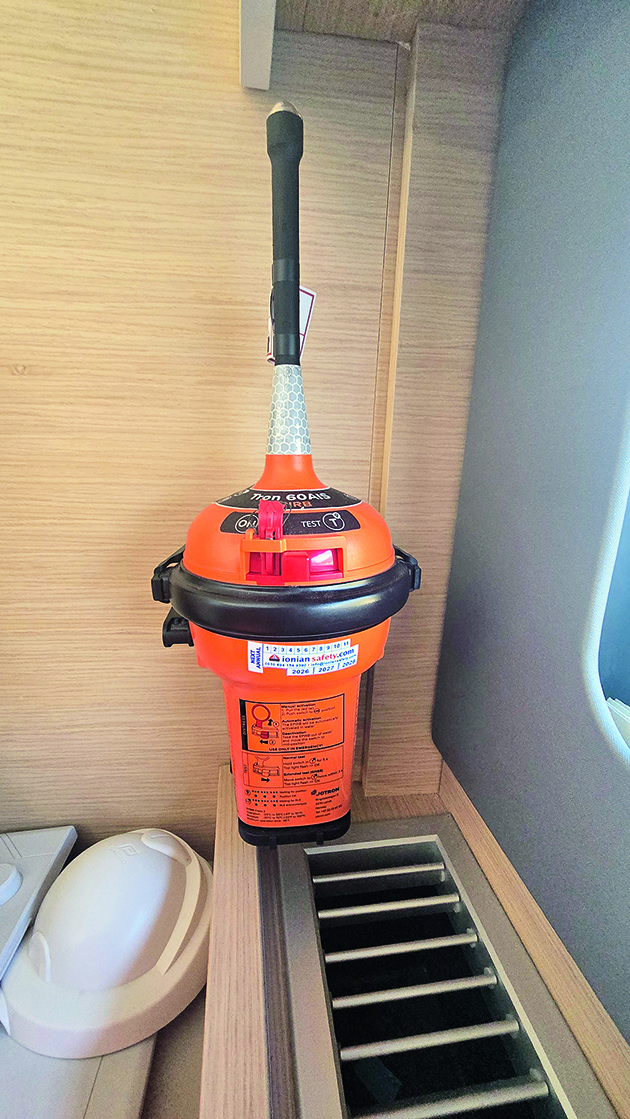
Safety equipment for going offshore, like an EPIRB, should be carried, regardless of boat size. Credit: Katy Stickland
Throughout history, the most important feature of any ocean-going vessel was seaworthiness, and as long as this criterion is met, you’re just as safe aboard a small 34ft yacht as you are on a well-designed 58ft yacht.
Safety equipment like a VHF radio, EPIRB, lifejackets, liferaft, storm sails, and a drogue, should be carried regardless of boat size.
Sea
Sailing any ocean aboard any kind of sailing vessel is a unique experience.
Encounters with wildlife, sunrises and sunsets will generally always feel the same, although personally, I feel closer to the sea and more exposed to the elements in a small boat.
People
The crew you sail with and the people you meet in remote places of the world are generally always nice.
Wherever we sailed on HIR 3, people would comment on our bravery and were particularly friendly because of it.
Wherever we stopped with the 58ft Hanse, people admired the boat and were just as friendly.
The most precious memories I have from my travels were the people I met along the way. The more remote the place, the friendlier the people are.
Places
Whatever the size of boat you sail, the places you visit will be the same and made special because of the sense of achievement.
Sailing to an island in the middle of the ocean feels like a conquest. It’s the closest anyone can come to experiencing how the early explorers must have felt.
Experiences
Living off-grid on a boat while sailing across oceans and downwind sailing in trade winds are experiences like no other.
It doesn’t matter how big your floating home is; you can enjoy the waves, wind, unexpected encounters, and sundowners just the same.
There are many options for cruising offshore, be that on a small, modest boat, an average cruiser or aboard a luxury yacht.

Saša Fegić began sailing in his teens and has worked as a deckhand, charter and delivery skipper, sailing school operator and boatbuilder. He restored the 10m/32.8ft HIR 3 to circumnavigate the world around the three Great Capes. His book, My Way Around the World, is about his voyage
There are no rules; the boat just needs to be seaworthy and the crew competent for the type of sailing.
I sailed around the world on a small boat with very little comfort.
It was a good decision at the time, but I’d go for a few more luxuries if I were to do it again, including a comfortable bed, a warm shower, a big galley and an engine I wouldn’t have to repair every single day.
I’m aware this will require a significantly higher budget, but this time I’m willing to pay the price.
Best centre cockpit sailboat designs: the Moody 34 and 346 + 5 alternative yachts
The Moody 34 and 346 were the smallest and best-selling of Moody’s centre cockpit sailboat models in the 1980s. Rupert…
Jeanneau Sun Odyssey 32 + 8 alternative yachts: which is the best 31/32 ft boat?
Rupert Holmes compares the Jeanneau Sun Odyssey 32 with 8 other 31ft and 32ft used boat designs from the late…
Second hand focus: Hallberg Rassy 352 + 8 alternative yachts to consider
Rupert Holmes celebrates the attributes of this iconic, but expensive, Scandinavian design and highlights other options
Hanse 348: the spacious performance cruiser
The Hanse 348 promises excellent performance under sail with ease of handling, even single-handed. Peter Poland puts it to the
Want to read more articles like New boat vs old boat: which is best?
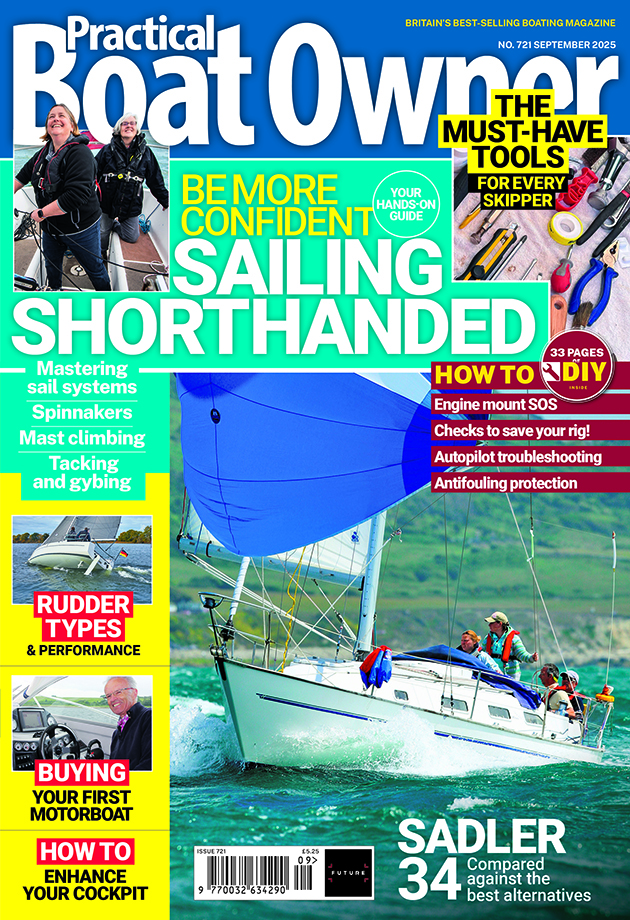
A subscription to Practical Boat Owner magazine costs around 40% less than the cover price.
Print and digital editions are available through Magazines Direct – where you can also find the latest deals.
PBO is packed with information to help you get the most from boat ownership – whether sail or power.
-
-
-
- Take your DIY skills to the next level with trusted advice on boat maintenance and repairs
- Impartial, in-depth gear reviews
- Practical cruising tips for making the most of your time afloat
-
-
Follow us on Facebook, Instagram, TikTok and Twitter

